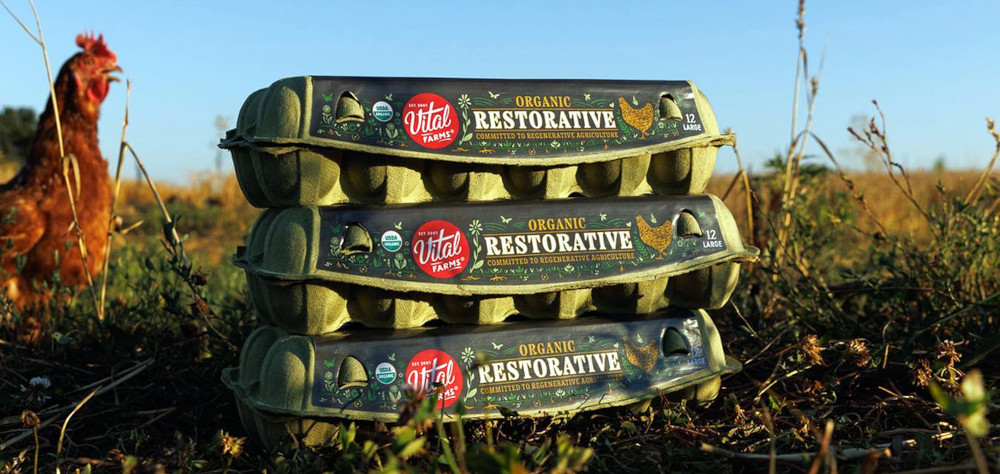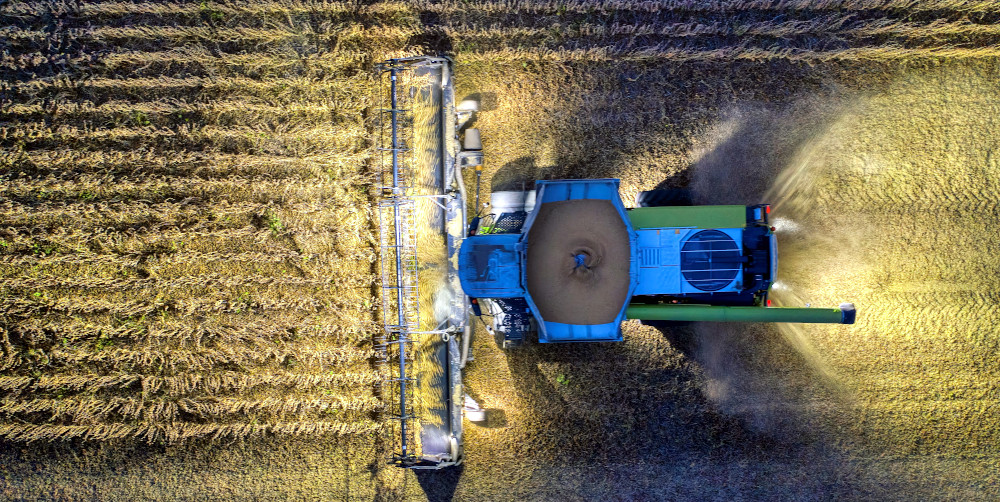On Thursday at Brand-Led Culture
Change, a
variety of stakeholders scaling regenerative agriculture convened for
Sustainable Brands®’ second Regen Ag Summit to share the latest insights
and innovations driving progress in the field.
How to translate regenerative agriculture into consumer marketing
 Image credit: Vital Farms
Image credit: Vital Farms
Moderated by Kristine Root, Chief
Marketing Officer at Regenified — a third-party
organization that certifies regenerative farms and products — this session
covered the brand journey of US-based pasture-raised egg and butter producer Vital
Farms, the benefits of regenerative practices at the
farm level, and how Vital Farms turned its Restorative
Eggs line into a top-performing product at
Whole Foods in 2023.
Andrea Chu, Vital Farms’ Director of
Impact and ESG, shared how the company has been deliberate in the design of its
supply chain and direct relationship with farmers.
“Our supply chain is intentionally short as part of our business model,” she
explained. “We want to have a direct relationship with farmers, so we can
partner with them to move towards more regenerative-agricultural
practices.
A super important piece is that we are paying a premium to the farmers since we
are asking them to take risks. We continue to invest in the farmers’ success, so
that we can keep selling their eggs.”
Four of Vital Farms’ farms have been verified by Regenified. Chief Scientist
Doug Peterson discussed
some of the benefits farmers have seen by putting regenerative practices in
place, emphasizing the importance of the water cycle and its impact on climate.
“We need carbon in the soil to keep the plants cool and not evaporate … managing
the plants correctly in ways that allow water to transpire through a plant —
that’s the key.” According to Peterson, the farms employing regenerative
practices have seen less flooding and water evaporation.
Despite a premium price point, Vital Farms Restorative Eggs have outperformed
sales expectations at Whole Foods — which Chu said is partially thanks to
packaging design: “We put the flower crops and plants on the pack. Consumers
were very interested in the biodiversity message.” She mentioned ways the brand
is using the on-pack messaging — including a “Vital Times” and a “Hen of the
Month” feature inside the carton — to educate consumers about regenerative
agriculture.
How soy is fueling the economy and brand value
 Image credit: Julio César García
Image credit: Julio César García
In this educational session about soy, Mac
Marshall — VP of Market Intelligence
at the United Soybean Board — talked about the
prevalence of soy in many products today. He touched on common B2C applications
such as edamame, tofu, soy sauce and infant formula as well as the sometimes
lesser-known, B2B applications for soy — including feed for animal livestock or
as a key ingredient in renewable aviation fuel and renewable diesel.
“We need energy to fuel the economy, but in ways that are not relying on
extractive techniques,” Marshall said.
He thanked the attendees in the room who attended the soy farm visit earlier in
the day and emphasized the need for brand and communication professionals to
visit the farms where they are sourcing ingredients for products.
“Going out to a farm is such an essential part of understanding what is possible
for a downstream brand,” Marshall asserted. “It’s part of understanding what
your brand can do, but it is all fundamentally grounded in what farmers do.”
How to drive commercial value by quantifying regenerative sourcing
 Image credit: Tom Fisk
Image credit: Tom Fisk
In this data-driven session, Cristina
Lampert, Head of Growth &
Innovation at HowGood, gave an overview of how HowGood
works with growers, suppliers and manufacturers to calculate the impacts of
regenerative sourcing at the product level.
Lampert shared best practices such as ensuring that all data inputs are aligned
with the GHG Protocol and selecting a data provider that is the most
relevant for your industry. She then gave examples of the various ways that
HowGood’s data can be used by brands — category benchmarking, sustainability
claims, ESG reporting, Investor Relations, carbon footprint (such as the
carbon-labeled menu
items
at this week’s event), and loyalty programs — to engage and inform various
stakeholders about the many ways regenerative sourcing creates value.
Lampert ended the session by sharing examples of the kinds of data its SaaS
platform provides through its impact assessment score — including information
about relevant sustainability claims; carbon footprint data for a particular
product vs. the overall category average; and metrics such as farm water usage,
land use, soil health, biodiversity and animal welfare.
How to ensure social, as well as environmental, resiliency in cotton
 Image credit: Forum for the Future
Image credit: Forum for the Future
The Summit concluded with an informative session on cotton. Led by Paul
Shoemaker, Executive Director at
Carnation Farms, the panelists began by
discussing the greatest threats to the future of the cotton industry — including
climate impacts, water scarcity and record temperatures (“We work across
Southeast Asia and India, and we have seen tremendous heat,” said
Alison Ward, CEO of
CottonConnect. “Last year, we saw heat above
50°Celsius — that’s the equivalent of 122°Fahrenheit.”), along with
sometimes less obvious threats such as global conflict and political unrest.
Samantha Veide, Managing
Director of US/Americas at Forum for the Future, spoke
about the organization’s
work to examine
new business models for regenerative
cotton
— including a pilot in West Texas working with Black farmers interested in
regenerative practices.
Veide highlighted the importance of including social considerations in the
definition of regenerative agriculture: “For us, it is important that we are
infusing people back into the conversation about regenerative agriculture. It’s
about looking at the environmental impacts of the soil — but also looking at the
quality of life of the people harvesting cotton, as well as the farmers who
often take on the greatest financial risk.”
Veide closed the session with advice for how businesses can shift to a more
regenerative mindset:
- Focus on the how, not just the what.
- Start with potential, not problems.
- Care for the operating context.
- Value history and lived experience.
- Radically embrace a participatory approach.
Mara Slade is a seasoned communications professional having worked both in-house in sustainability roles and at top creative agencies including Edelman and Digital Kitchen. She has led corporate ESG reporting projects for a variety of Fortune 500 clients ranging from tech, retail, sustainable agriculture, consumer packaged goods, financial services, among others. She is a certified GRI reporter with an MBA from Presidio Graduate School in Sustainable Management.
Published May 10, 2024 12pm EDT / 9am PDT / 5pm BST / 6pm CEST